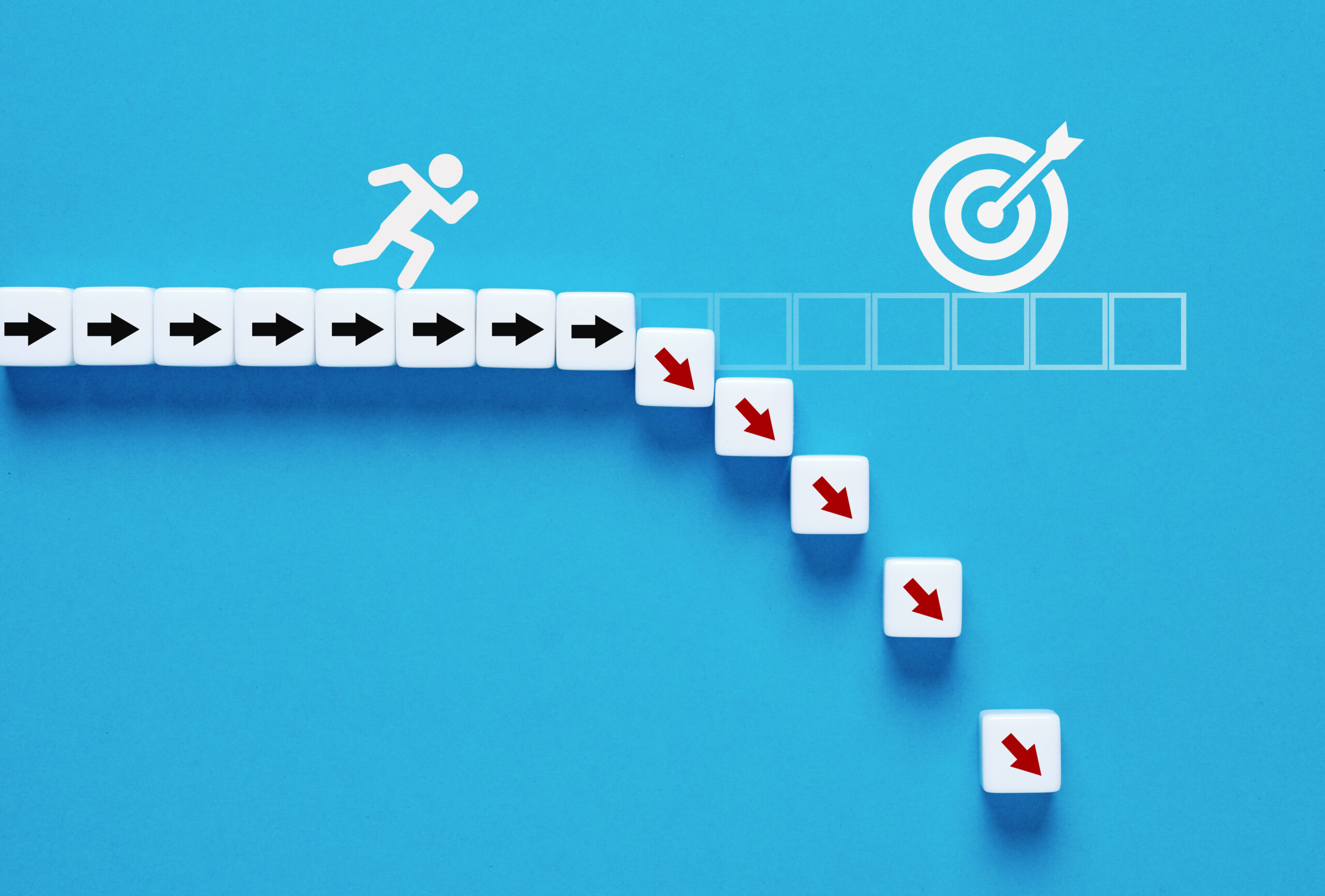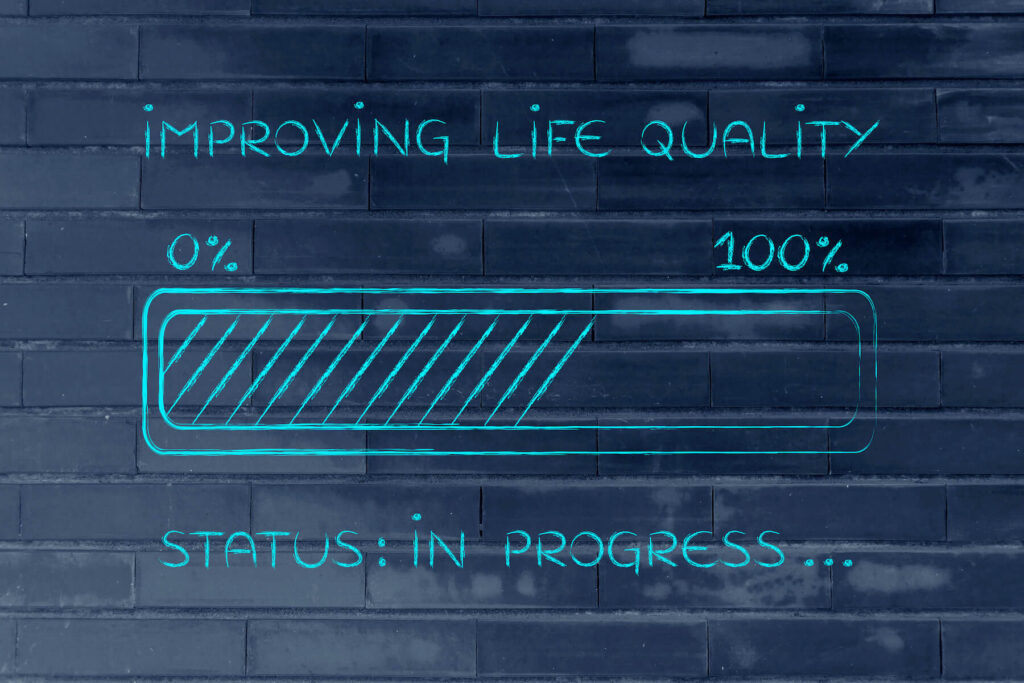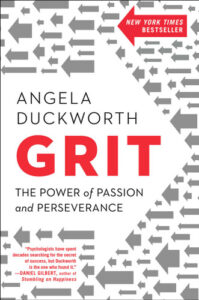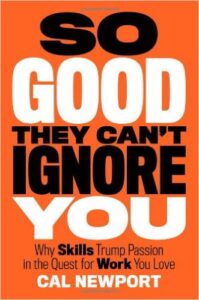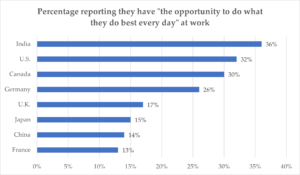Article Summary:
This article notes the most common mistakes in goal-setting and goal-pursuit. It’s the second article in a four-part series on goals.
+++
Though researchers have examined goals and goal-setting for more than a century, the practice of setting and pursuing goals is still widely misunderstood and often badly misapplied.
There are dangers of not getting it right. When we don’t set and pursue goals properly, we can experience frustration, stress, burnout, and disillusionment.* In this article, we’ll first address the most common mistakes in goal-setting and then turn to the most common mistakes in goal-pursuit.
The 8 Most Common Mistakes in Goal-Setting
There’s no shortage of advice and opinions on setting goals. Unfortunately, much of the advice gets some things wrong or falls short on at least a few key factors.
Given how little training we’re given in goal-setting (if any), perhaps it should be unsurprising that there are many things we’re missing. Here are eight common mistakes:
1. Not identifying and focusing on the most important goal.
2. Getting overwhelmed with too many goals.
When we have too many goals, it risks diluting our efforts. (More on this in my next article: “Goal-Setting: Best Practices.”)
3. Adopting other people’s goals.
We’re social creatures prone to extensive influence from others, but taking on the goals we think we should have or ones that others will admire can take us away from our own aspirations and aims. This mistake often results from the trap of caring too much about what others think.
“…to let another man define your own goals is to give up one of the most meaningful aspects of life—
the definitive act of will which makes a man an individual.”
-Hunter S. Thompson, letter to his friend Hume Logan
4. Setting goals out of ego.
We may set goals from a place of wanting or needing to attain status or prestige from others if we achieve certain things they value. (This can lead us down the trap of excessive materialism, which can be a drain on our ultimate happiness because of “hedonic adaptation”—our tendency to return quickly to our baseline level of happiness even after experiencing major changes or events.)
5. Setting goals only in one area.
Many people leap right into goals about a promotion or target weight but overlook the importance of setting goals for their relationships, education, or community. Why not set goals in a few different key areas (perhaps choosing from these categories: quality of life, health, relationships, education, work, service, or finances), while also being careful not to have too many goals? Researchers have found that relationship goals tend to bring greater wellbeing than achievement goals.
6. Assuming that achieving our goals will make us happy.
Naturally, many positive emotions tend to accompany goal attainment, from satisfaction or relief to excitement or elation. But the effect is often more short-lived than we imagine. Most goal attainment only changes things temporarily, and we humans have a tendency to adapt quickly to the new normal (again, “hedonic adaptation”). There’s more to life than achieving goals.
It’s often the pursuit of the goal that really engages our motivation (writer Chris Guillebeau calls it the “happiness of pursuit”). Many people struggle with the doldrums or low motivation after achieving a big goal because their animating focus has suddenly disappeared. Also, lasting happiness is much more about close personal relationships, purpose, and contribution than it is about goal attainment or material status.
7. Thinking too much about the end result we’re after and not enough about whether we’re willing to endure the pain and sacrifice to achieve our goals.
Dreaming of marvelous scenarios of goal attainment is the easy part, but only a small fraction of the process. The real question is what we’re willing to do and give up to make our goals a reality.
“The major reason for setting a goal is for what it makes you do to accomplish it.
This will always be a far greater value than what you get.”
-Jim Rohn, entrepreneur and author
8. Focusing too much on the goal and not enough on developing the habits, systems, and practices needed to achieve the goal and measure our progress along the way.
We can dream or visualize all we want, but in the end we need to roll up our sleeves and get cracking with the sometimes boring but always important grind of goal-pursuit.
The 6 Most Common Mistakes in Goal-Pursuit
What do many people get wrong when it comes to pursuing their goals? A lot. Here are six common mistakes:
1. Lowering goals if we fail to achieve them.
It may be tempting to lower the bar after hitting the first hurdle, instead of redoubling our efforts. Ratcheting goals down should not be the knee-jerk response to roadblocks.
2. Letting our goals master us.
Sometimes all the time and energy we pour into accomplishing something devolves into an unhealthy fixation. When that happens, we can lose perspective, rationalize poor choices, and detach from our core values. Letting this happen can result in health and relationship problems or ethical failures and regrets.
3. Investing too much of our identity and self-worth in whether we achieve our goals.
There’s nothing wrong with being committed to our goals. Far from it. But if we judge our identity and worth by whether we always achieve our goals, we’re essentially placing our happiness in unreliable hands because we can’t control all the variables.
Sometimes we get ill, or face a family crisis or unexpected work challenge, or the market turns, or a recession or pandemic hits. At the end of the day, are we only goal-striving machines, or are we worthy of love and respect regardless of the fickle ups and downs of fate? (See my article, “Is Your Identity Too Wrapped Up in Your Work?”) In her book, The How of Happiness, researcher Sonja Lyubomirsky notes that “happiness will come from pursuing goals, and not necessarily from achieving them.”
“We are not devastated by failing to obtain a goal.
We’re only devastated when our sense of self-esteem and self-worth are dependent upon achievement of that goal.”
-William James, American philosopher and psychologist
4. Undermining our intrinsic motivation.
When we try to supercharge our motivation by seeking extrinsic rewards (like praise, awards, or fame), it can sap our interest and enthusiasm, according to researchers, by turning what we previously viewed as play into work.
5. Not updating our goals as we learn more about ourselves and as we grow and develop through life’s chapters.
New experiences and hard-earned wisdom come with each chapter of our lives. And our priorities are likely to change as we go through the seasons of life. Young people, according to the research, are more drawn to goals that involve experiencing novelty and gathering new information or knowledge. Meanwhile, older people tend to be more interested in emotionally meaningful goals and personal connections.
6. Losing steam in our goal-pursuit.
As humans, we often struggle with the future when it comes to our motivational hardwiring. When something is far off in time, and our immediate experience with things involves challenge and frustration, we tend to slack off—at least until the immediacy of a deadline or fear of failing can kick us into gear.
Reflection Questions
- How are things going with your goal-setting and goal-pursuit?
- Which of these mistakes, if any, have you made or are you making?
- What will you do about it, starting today?
Tools for You
- Goal-Setting Template to help you set goals you can achieve based on best practices
- Goals Guide: Best Practices in Setting and Pursuing Goals, a 30-page guidebook to walk you through this important process
- Traps Test (Common Traps of Living) to help you identify what’s getting in the way of your happiness and quality of life
Related Articles
- The Benefits of Setting and Pursuing Goals
- Goal-Setting Best Practices: Beyond SMART Goals
- Goal-Pursuit: Best Practices
- Is Your Identity Wrapped Up Too Much in Your Work?
- The Powerful Practice of Acceptance”
- Do You Have Limiting Beliefs About Yourself?
- The Complacency Trap
- Avoid These New Year’s Resolution Pitfalls
Postscript: Inspirations on Common Mistakes with Goals
- “Make sure your vision or goal is not an inflated image of yourself and therefore a concealed form of ego, such as wanting to become a movie star, a famous writer, or a wealthy entrepreneur. Also make sure your goal is not focused on having this or that, such as a mansion by the sea, your own company, or ten million dollars in the bank…. Instead of seeing yourself as a famous actor and writer and so on, see yourself inspiring countless people with your work and enriching their lives. Feel how that activity enriches or deepens not only your life but that of countless others.” -Eckhart Tolle, A New Earth
- “Career goals that once felt safe and certain can appear ludicrous… when examined in the light of more self-knowledge. Our work preferences and our life preferences do not stay the same, because we do not stay the same.” -David Epstein, Range: Why Generalists Triumph in a Specialized World
* There are even some situations in which goal-setting can work against us. For example, researchers have discovered that in tasks that require complex thinking (e.g., when we’re solving problems, engaging in creative work, or learning), goal-setting can sometimes backfire. One main reason is that the goal itself can take up so much space in our attention and working memory that we have less cognitive firepower left to generate new ideas and think through new solutions. Essentially, the goal can become a distraction.
++++++++++++++++++++++++++++++
Gregg Vanourek is a writer, teacher, TEDx speaker, and coach on personal development and leadership. He is co-author of three books, including LIFE Entrepreneurs: Ordinary People Creating Extraordinary Lives (a manifesto for integrating our life and work with purpose, passion, and contribution) and Triple Crown Leadership: Building Excellent, Ethical, and Enduring Organizations (a winner of the International Book Awards). Check out his Best Articles or get his monthly newsletter. If you found value in this article, please forward it to a friend. Every little bit helps!

